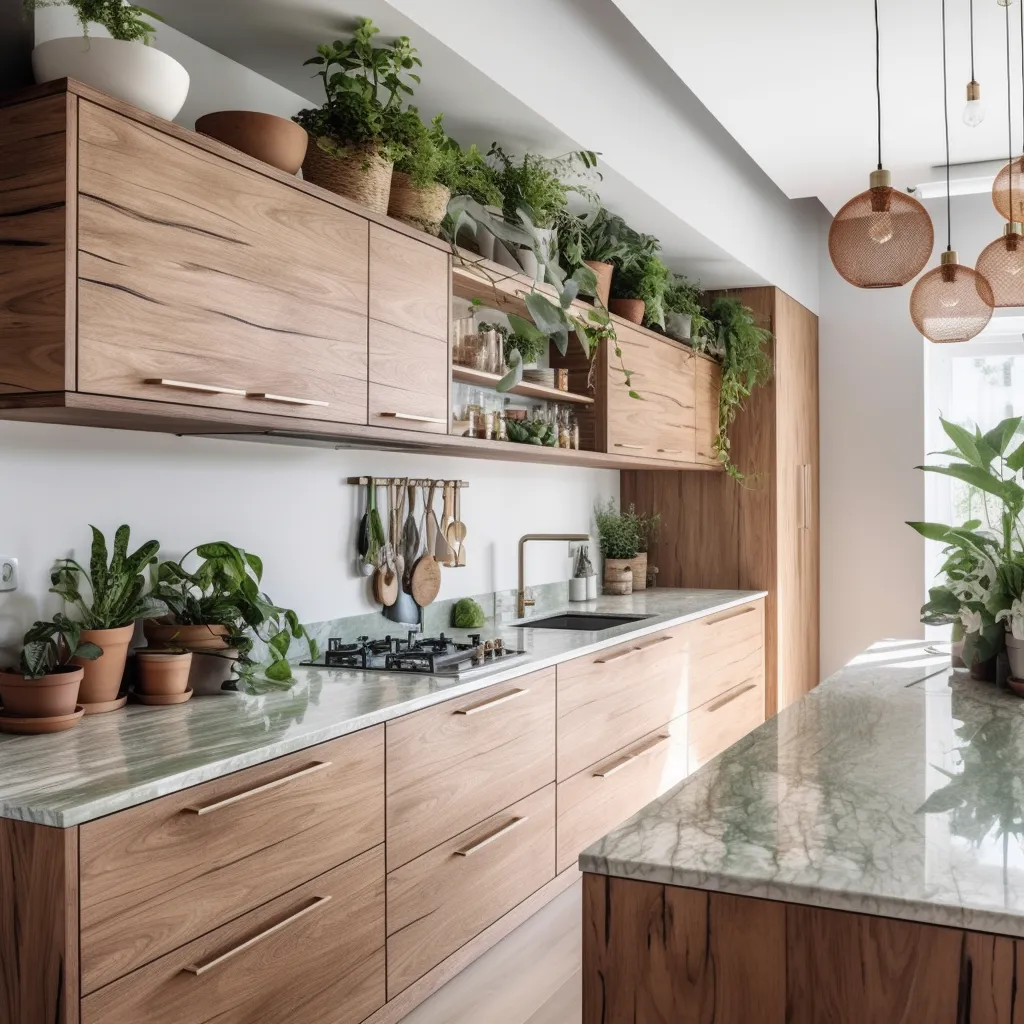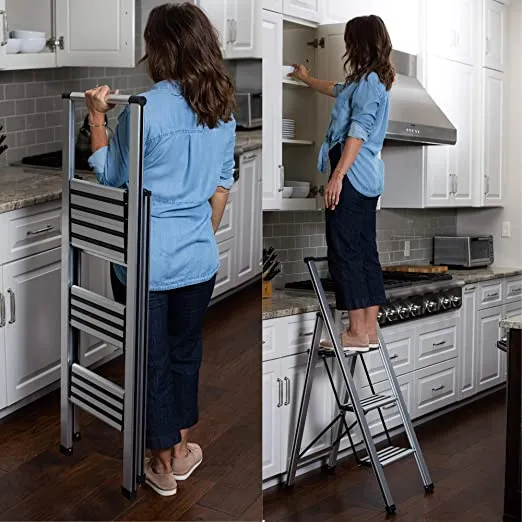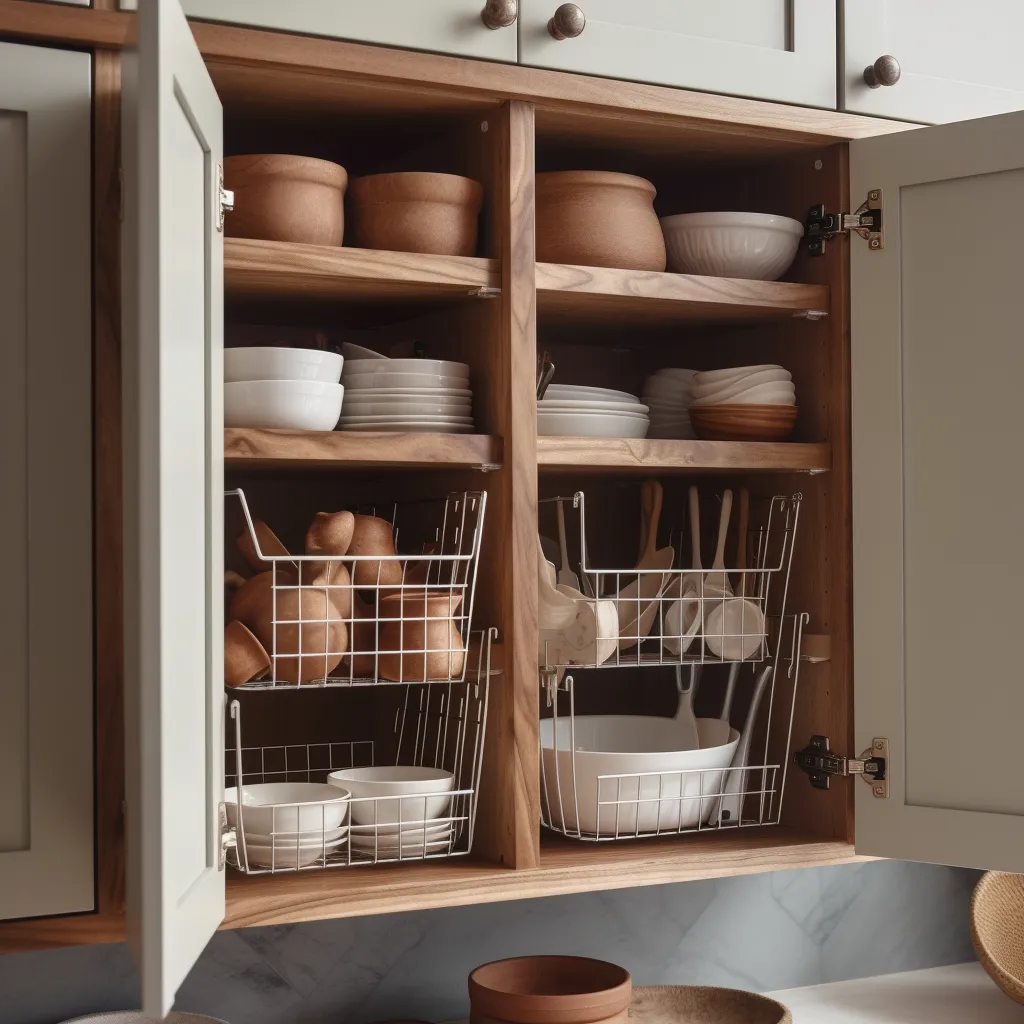Did you find our blog post absolutely inspiring? If so, we encourage you to spread the word and share this valuable information with your friends, family, and colleagues.
Should Kitchen Cabinets go to The Ceiling?
Kitchen cabinets are an essential part of any kitchen. They provide storage space for all of your kitchenware, and they can also add to the overall aesthetic of your kitchen. One question that often comes up when designing a kitchen is whether or not the cabinets should go all the way up to the ceiling. In this blog post, we'll explore the pros and cons of this design choice and help you decide if it's the right choice for your kitchen.

Why is there a Gap Between the Kitchen Cabinets and the Ceiling?
If you've ever noticed a gap between your kitchen cabinets and the ceiling, you're not alone. This gap is often created because the ceiling in your kitchen may not be level, or it may have other architectural features that make it difficult to install cabinets all the way to the top. Additionally, the gap allows for easier installation and maintenance of the cabinets.
How Do You Fill the Gap Between Cabinets and Ceiling?
If you choose to leave a gap between your cabinets and ceiling, there are a few ways to fill the space. You can add molding to the top of the cabinets to create a finished look, or use the space to display decorative items such as plants or artwork.

Should I Extend My Cabinets to the Ceiling?
Extending your cabinets all the way to the ceiling has its advantages and disadvantages. On the one hand, it provides extra storage space and makes your kitchen appear taller, giving the illusion of a larger space. On the other hand, it can make accessing the top shelves more difficult, especially if you're not tall enough to reach them without a ladder or step stool.
Use a Ladder to Reach Tall Cabinets
If you do choose to extend your cabinets to the ceiling, you'll need to consider how to access the top shelves. A ladder or step stool can help you reach items on the top shelves. However, if you have mobility issues, this may not be a practical option.

Ceiling Height
The height of your kitchen ceiling is an important factor to consider when deciding whether or not to extend your cabinets to the ceiling. If you have a high ceiling, then extending your cabinets to the top can make the space feel more proportional. However, if you have a low ceiling, it may not be practical or aesthetically pleasing to extend your cabinets all the way to the top.
Ceiling Details
The details of your ceiling, such as beams or crown molding, can also impact your decision. If you have decorative ceiling details that you don't want to cover up, leaving a gap may be the better choice.
Budget
Extending your cabinets to the ceiling can be more expensive than leaving a gap. You'll need to factor in the cost of additional cabinetry, installation, and any modifications needed to the ceiling. If you're working with a tight budget, leaving a gap may be the more cost-effective option.
Pros of Kitchen Cabinets to the Ceiling
One of the most significant advantages of having cabinets that go to the ceiling is that you can maximize your storage space. This is especially important if you have a smaller kitchen or if you have a lot of kitchenware that needs to be stored. With cabinets that go to the ceiling, you can use the space above the cabinets that would otherwise be unused.
Another benefit of cabinets that go to the ceiling is that they can make your kitchen look taller. This can be especially beneficial if you have a low ceiling or if you want to create the illusion of more space in your kitchen.
Cons of Kitchen Cabinets to the Ceiling
While there are certainly benefits to having cabinets that go all the way up to the ceiling, there are also some downsides to consider.
One of the main cons of having cabinets that go to the ceiling is that they can be challenging to access. Unless you are particularly tall, you may need to use a step stool or ladder to reach items stored on the top shelves. This can be a hassle if you use these items frequently, and it can also be a safety hazard if you're not careful.
Another potential downside to having cabinets that go to the ceiling is that they can make your kitchen feel more closed-in. If you have a small kitchen or if you already have a lot of cabinets in your kitchen, adding even more cabinets that go all the way to the ceiling can make the space feel cramped.
Make the Most of Every Inch
Whether you choose to extend your cabinets to the ceiling or leave a gap, it's important to make the most of every inch of storage space. Use all vertical space in your cabinets by adding pull-out drawers or shelves, or using hanging organizers on the inside of cabinet doors.

Is It Right for You?
Ultimately, the decision of whether or not to have cabinets that go to the ceiling is a personal one. There are pros and cons to this design choice, and it's up to you to weigh them and decide what's best for your kitchen.
If you have a lot of kitchenware that needs to be stored and you want to maximize your storage space, then cabinets that go to the ceiling may be a good choice for you. If you have a smaller kitchen or if you want to create the illusion of more space, then you may want to consider other design options.
If you do decide to go with cabinets that go to the ceiling, be sure to keep accessibility in mind. Consider investing in a step stool or ladder that you can easily access when you need to reach items on the top shelves.
In conclusion, there are pros and cons to having cabinets that go all the way up to the ceiling in your kitchen. Consider your storage needs, the size of your kitchen, and your personal preferences before making a decision. With careful consideration, you can create a kitchen that is both functional and beautiful.

Ready to take the next step towards your dream space? Let's make it happen! 🏡
For outstanding cabinets, convenient RTA solutions or remarkable flooring services, look no further than River City Cabinets. Our team of experts is ready to help you bring your vision to life. Fill out our contact form with project details, preferences and specific requirements. We'll promptly review your information, offer personalized recommendations and collaborate with you until your space is transformed. Contact us now for exceptional customer service and results you'll love.

